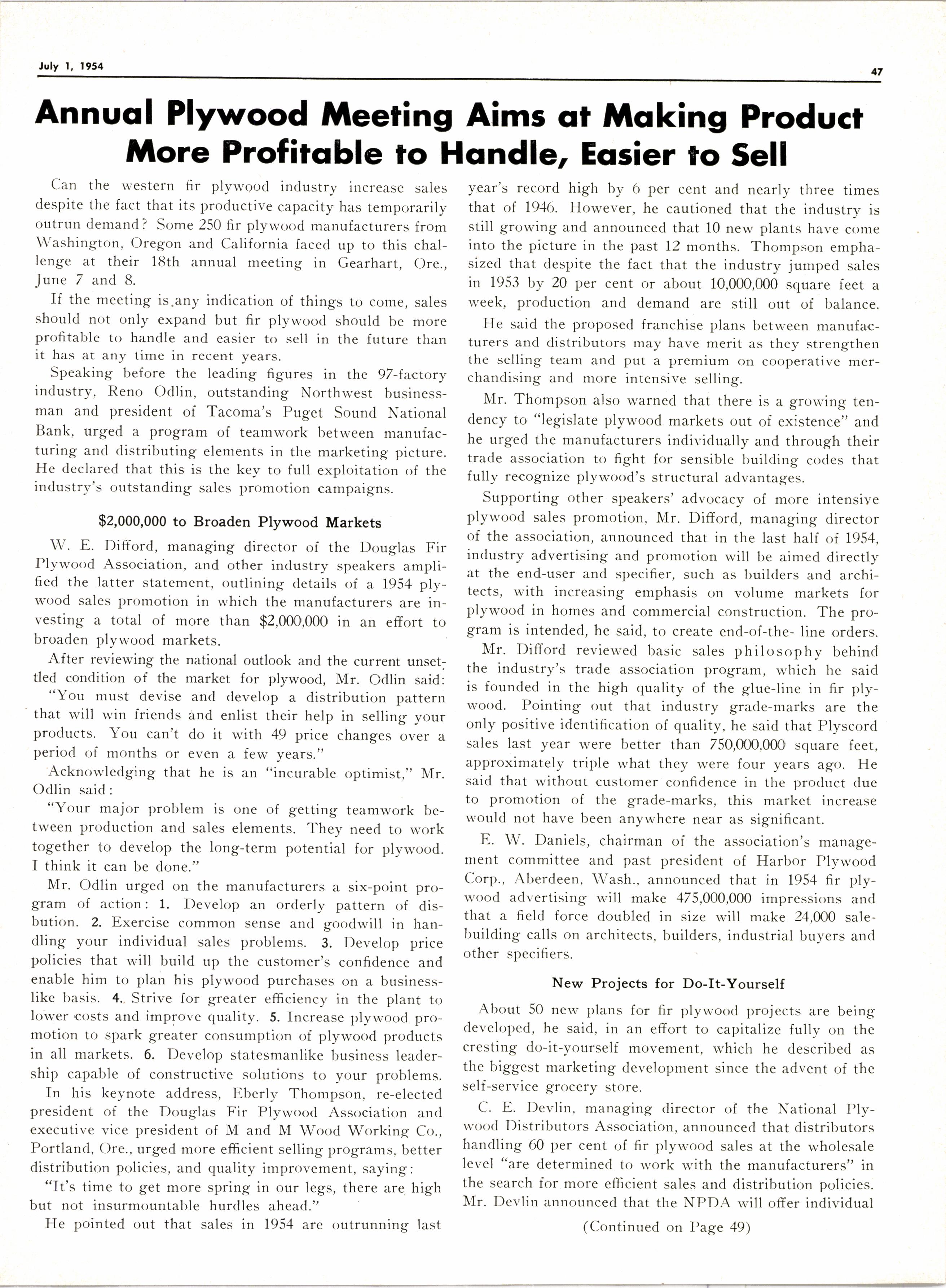
2 minute read
Weyerhoeuser Tells F. P. R. 5. Future Forest Growth Moy Meet All Nolion's Wood R.equiremenls
EXECUIIVE BOARD I/IEMBERS of rhe Foresl Products Rerearch Society ol the recent eighth onnuol nccting in Grqnd Rcpids, Mich., included, front row, left to right: Posl President Robeil D. Pouley, monoger, specicl pnoducb divbion, Weyerhoeuser fimber Co., Tocomcl Vice-preridcnt Rolph H. Bascher, Pittsburgh district moncgar of soles ond operotions, wood preseruing division' Koppars Co., Piilsburgh; President Lester J. Corr, generol monoger, lesler J. Corr & Co., Socromcnto, ond President-elect Mors B. Christion, director of rescorch, Chicago Mill qnd lumber Co., folluloh, [o. Bock row, leff to right: Nodhwest regionol boord member John D. Rilchie, direaor Allied Products deporlment, Douglos Fir Plywood Associofio4 Tocomo; South-Cenirol regionol boord member W. Jeler Eo3on, secretorylr{3urer, Nickey Brorhers, Memphis; Northeost regioncl boord membor Frsnk T. Porrirh, reseorch ond development dilactor. Heywood-Wokefield Co. Gordner, Moss.; North-Centrql regionol boord member Dr. J. Alfred Holl, director, Fore3t Producti loborotory, U.S. Dapr. of Agriculture, Modison, Wis., ond Southeort regionol boord member Dr. Ellwood S. Horror, professor of wood technology, School of Forestry, Duke Univcrsity, Durhom, N. C.
The 1954-55 Executive Board members of the 2,700member Forest Products Research Society are shown above at the eighth annual meeting held recently in Grand Rapids, Micl-r. The FPRS is devoted to the furtherance of forest products research, development, production, utilization and marketing.
"It is entirely possible that the future forest growth will meet all the nation's wood requirements in the years to come," J. P. \\reyerhaeuser, Jr., president of the Weyerhaeuser Timber Co., Tacoma, told the meeting in a dinner address. He said that the results of a study by Stanforrl Research Institute on the probable demands for all forest products through 1975 will be released upon completion later this summer.
Members of the Forest Products Research Society got a peek into the future when Mr. Weyerhaeuser, Jr., revealed some early findings of the Stanford study on wood product demands through 1975.
In the study, financed by the \\reyerhaeuser Timber Co., the research group concludes that United States forest product requirements in 1975 can be met with less than a five per cent increase over 1952 in board feet of sawlogs delivered to the millsite and an increase of less than 15 per cent over 1952 in total cubic volume of all wood delivered to mills.
Improved mill utilization of lumber and plyrvood leitovers and greatly reduced use of fuelwood were listed by Mr. Weyerhaeuser as reasons why it will be possible to meet the fast-growing demands for forest products r''i'ithout overcutting existing forests.
"Lumber is still the material the others have to beat," the Tacoma lumberman declared; "why else do others advertise that their product can be sawn like lumber, nailed like lumber, this and that like lumber? There is still no other building material with all the virtues and versatility of lumber."
In addition to the members shorvn in the accompanying photo, the executive board also includes Ray E. Shrecl<, director of research and development of the Union Lumber Company, San Francisco, who is southwest regional board member, and Executive Secretary Frank J. Rovsek, Box 2010. Universitv Station. Madison 5. Wis.










